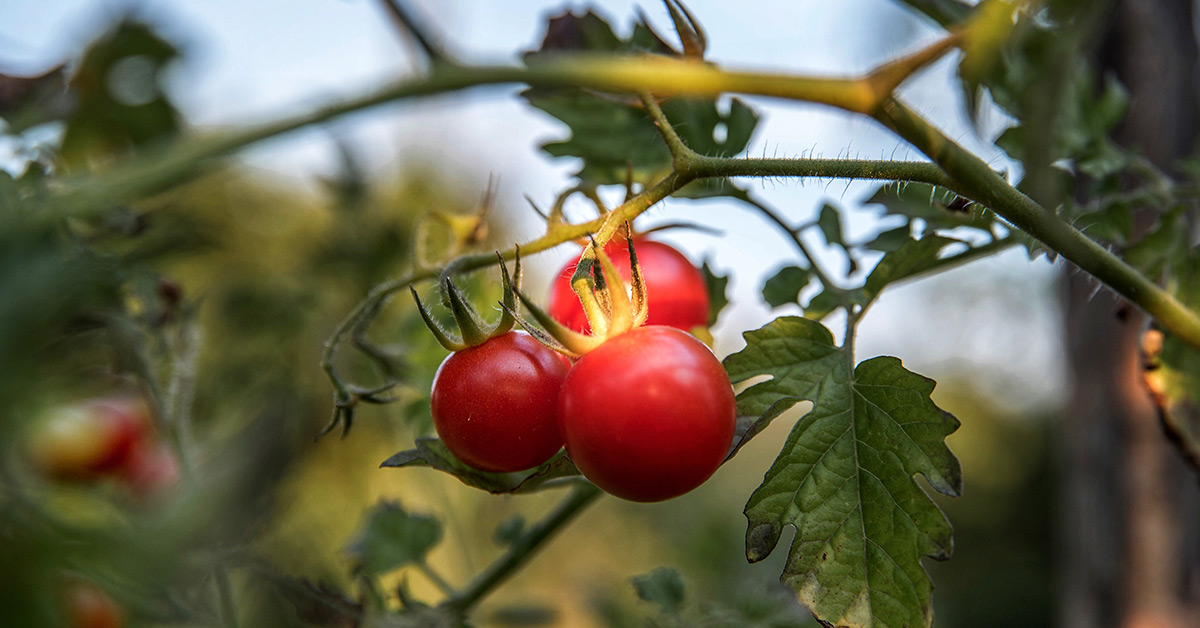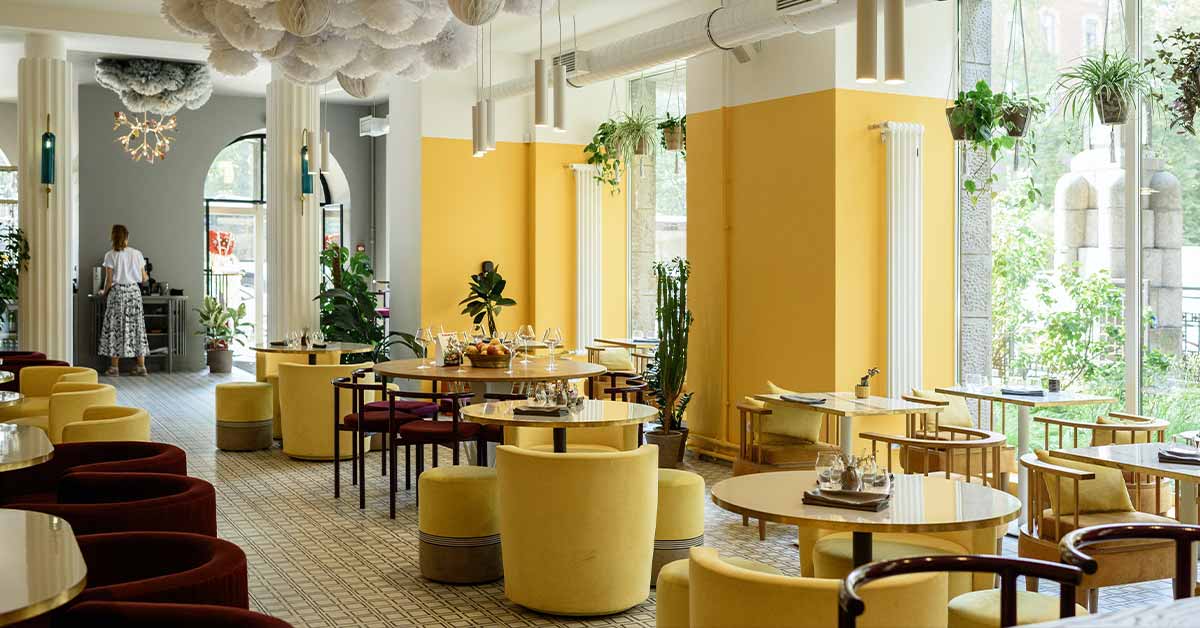
How does the food served by restaurants affect our planet? While the restaurant industry focuses on making memorable experiences for customers, it inevitably creates a negative impact on the environment. From the emissions released during livestock production, to the water used in the food supply chain, to the food waste generated along the way, restaurants create a substantial environmental footprint.
We’ve put together this restaurant sustainability guide in honor of World Environment Day. We’re sharing the impact that the restaurant supply chain has on the environment, examples of how restaurants are minimizing their footprint, and sustainable restaurant practices that you can implement to reduce your impact.
The negative impact of our food’s supply chain on restaurant sustainability
Food production, transportation, and preparation take a toll on our environment. Here’s how.
Meat production
Livestock agriculture produces 13-18% of the world’s greenhouse gas (GHG) emissions. However, not all livestock has the same impact on climate change.
Lamb and beef create more emissions than any other type of meat. According to researchers at Bard College, beef production requires/produces 28 times more land, 11 times more water, and five times more greenhouse gasses than other livestock. In fact, it takes 1,800 gallons of water to produce just one pound of restaurant-ready beef!
Transportation
The beauty of living in a global economy is that you can get produce year-round, independent of seasonality. If you operate a restaurant in New Jersey and want blueberries in January, you can get them from Chile. However, those blueberries will have traveled more than 5,000 miles to reach your restaurant – using a lot of fuel and generating harmful emissions. In fact, 11% of food production-related GHG emissions are caused by transportation.
Waste
The food supply chain and restaurant customer experience generate a lot of waste – from food waste to plastic waste, and more.
Unfortunately, one-third of the world’s food gets wasted. This waste alone amounts to 8% of the world’s greenhouse gas emissions. Additionally, one-fifth of all of the water used in the U.S. is used to produce food that ends up going to waste.
From throwing away “imperfect” foods in the manufacturing process and over-ordering supplies to the overuse of single-use plastics, the restaurant industry greatly contributes to the waste problem.
14 sustainable practices to implement at your restaurant
Scary statistics and inspirational stories create awareness, but real change is caused by action. Fortunately, sustainability in restaurants is a hot topic, with many finding creative solutions to combat the problems caused by the food supply chain. Here are some simple eco-friendly and food sustainability practices you can implement at your restaurant to minimize your environmental impact.
The farm-to-table movement
Food travels 1,500 miles, on average, to get from the farm to your customer’s table. This travel contributes greatly to GHG emissions and is therefore bad for the environment.
The farm-to-table movement, which focuses on sourcing ingredients that are local and in-season, was pioneered in Berkeley, California at Chez Panisse. The movement has gone from a niche idea to a mainstream trend in the United States and is helping to lower the impact of the food supply chain on our planet.
Eliminate straws
Thirty years from now, there will be more plastic in our oceans than fish. Plastic pollution has already had a negative effect on aquatic creatures, which accidentally consume this harmful waste.
Chicago’s Shedd Aquarium is leading the revolution to prevent single-use plastics from ending up in our waters through their Shedd the Straw initiative. Shedd Aquarium has inspired 150+ restaurants, bars, cafes, hotels, and sports venues in Chicago and around the country to eliminate straws, which end up in the oceans, and harm sea life.
Compostable containers
While not all food packaging can be eliminated, Mighty Love Food used to minimize their environmental footprint by offering compostable take out containers, cups, and silverware.
The Boston-based fast-casual restaurant partnered with a local farm to convert their customers’ trash into fertile compost that will help grow nutritious produce for the restaurant.
Charge for takeout containers
England saw an 85% reduction in plastic bag use after the country implemented a 5 pence bag fee in 2015. Even if your region doesn’t mandate a fee for plastic bags or takeout containers, introducing one at your restaurant could make customers more thoughtful about their impact before deciding to take their food to go.
Meatless Mondays
Take the emphasis away from meat, and reduce the strain it places on the environment, by implementing Meatless Mondays at your restaurant. Serve only plant-based dishes on Mondays, or maintain your usual menu but focus your marketing on meat-free dishes on Mondays.
Select meat wisely
If you can’t eliminate meat but still want to reduce your restaurant’s environmental impact, opt for poultry. It’s the most environmentally-friendly meat to produce and accounts for only 10% of livestock-related GHG emissions. Furthermore, choose vendors that use the best practices instead of the ones that give you the best price. Worried about higher prices scaring customers away? Three in four millennials and Gen Z-ers would pay more for sustainable goods.
Use an inventory management system to reduce food waste
Restaurants, grocery stores, and manufacturers throw out 52 billion pounds of food each year. What’s to blame? Two in three restaurants don’t use forecasting to manage their purchasing, which results in over-ordering and food spoilage. Use an inventory management system to reduce over-ordering.
Inventory management software such as Lightspeed Inventory automates routine stocktaking, allowing restaurant proprietors to concentrate on actionable data to address inventory issues. With this software, it’s simple to keep track of the amount of inventory acquired, generated, wasted or sold and minimize waste by making more informed purchases. In addition, Lightspeed Inventory streamlines the process by providing real-time deductions as menu items are sold and restocking when new inventory is received.
Implement energy-efficient appliances
In a comparable amount of space, restaurants use five times more energy than any other kind of retail business. This shocking fact accounts for energy used for food preparation, guest comfort (HVAC), and lighting. Replace your restaurant’s appliances with energy- and water-efficient ones to save your restaurant money, and reduce your environmental footprint. Even replacing incandescent light bulbs with LED ones will make a big difference.
Optimize delivery and transportation to reduce emissions
While you can’t plan ahead on where you’ll be getting your delivery orders from, there are methods to lower your emissions. If you manage your own delivery, opt for electric or hybrid vehicles for deliveries, which have significantly lower emissions compared to traditional gas-powered vehicles. Bicycles or electric scooters can also be an energy efficient alternative that’s also effective for short distance deliveries.
You can also reduce emissions by optimizing your delivery routes and number of trips. Analyze delivery orders and plan out our routes based on proximity to each order.
Many restaurants also offer incentives to customers that choose eco-friendly delivery options. Give customers discounts for ordering during off-peak hours or to nearby locations.
Additionally restaurants can also work on their supplier strategy to lower their carbon footprint. Opting for local suppliers, shifting to a farm to table strategy or bulk ordering can have a significant and positive impact on their emissions.
Start composting
Running a restaurant means food waste, but there are ways to turn waste into something that’s beneficial for the environment. Composting is the breaking down of organic matter into compost, which is a paste or fertilizer.
Compost can enrich soil or plants, making it a great way to reuse waste. If you have enough space and time, composting can be done either inside or outside your restaurant using a closed bin, soil and shovels, which are often available from dedicated composting companies. It’s important to keep the composting container accessible but away from the cooking area. Composting can take several months, but once finished, the resulting fertilizer can be used in your restaurant garden or donated to other organizations. Alternatively, you could contact a nearby composting company or collaborate with a local agricultural group to avoid sending your restaurant waste to landfills.
Minimize paper waste with digital receipts and menus
Paper doesn’t need to be a big part of your restaurant waste. Instead of printing out receipts for each customer, restaurants can send receipts directly to customers’ emails or phone numbers. This saves paper while also making it easier for customers to actually keep track of their receipts if they need them.
Do you change your digital menus regularly? While physical menus have been a staple for the industry for many years, they lack flexibility and need to be changed regularly when they get dirty, when menu items are no longer available or when you want to give your menu a refresh. Digital menus give restaurants way more flexibility, allowing staff to easily update or make edits when needed. Tools like Lightspeed Order Anywhere, let you create an online ordering experience that fits your branding with digital menus and gives customers more control over their order. QR code and online ordering doesn’t only help you save paper, but also food waste. As orders go directly to the kitchen, you can speed up service, and increase ordering accuracy.
Choose eco-friendly cleaning products
Traditional cleaning products often contain harmful chemicals that can be hazardous to both the environment and the health of your staff and customers. Eco-friendly are made from natural ingredients that are non-toxic and biodegradable, reducing the amount of chemicals that end up in the environment. Many eco-friendly cleaning products also come in environmentally friendly materials. If you’re looking to minimize your impact, look for certifications such as the EPA Safer Choice label or the Green Seal. Products with these labels have been rigorously tested and proven to be environmentally friendly.
Conserve water
There are several ways sustainable restaurants can conserve water. Invest in low-flow toilets and faucets. Practicing regular maintenance of faucets, pipes and appliances, such as dishwashers, can prevent leaks, which waste a substantial amount of water. Reducing the frequency of tasks like power washing or hosing down outdoor areas can also save water. Opt for sweeping out just using a bucket of water for cleaning. Make sure to only run dishwashers when they’re full and opt for energy efficient cycles.
Give staff regular training on water conservation techniques, like how to properly wash dishes and vegetables without wasting water.
Donate and partner with eco-friendly organizations
Establishing a donation plan is an excellent way to give back to the community while preventing food waste. While there are specific rules around donating food items, there are still several ways to utilize surplus food effectively. Food that has not yet expired, for instance, can be donated to local food banks, pantries, or rescue programs. Although you cannot donate partially eaten plates, you can donate full meals to specific organizations.
Donations are not only beneficial to humans, but also to animals. Zoos and farms often use ingredients commonly used in food preparation to feed specific farm animals. Before donating, make sure that you follow your region’s rules and regulations. Check out the resources below for more information:
The future of restaurant sustainability
While the current impact of the restaurant industry on the environment is alarming, we can change the narrative. With simple adjustments, restaurateurs can implement sustainable practices that will make an impact and reduce food waste, water usage, and emissions.
Are you ready to make a difference? Talk to one of our experts to see how Lightspeed can help you reduce waste.

News you care about. Tips you can use.
Everything your business needs to grow, delivered straight to your inbox.



